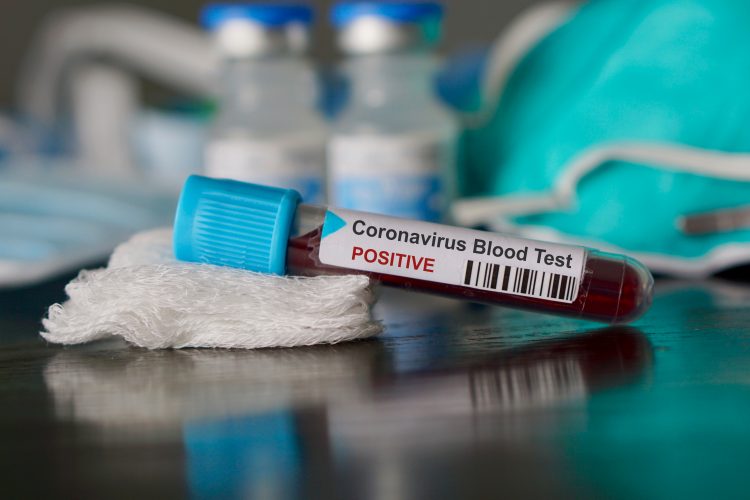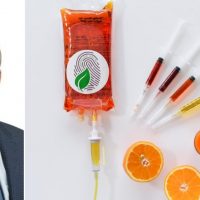I wanted to shed some light regarding the Coronavirus Disease of 2019 (COVID-19) pandemic. I am a first year internal medicine resident working in New York, caring for COVID-19 patients. What I wrote below, with the aid of mentors, is my take on where we stand with the virus and what I think we can better understand and improve. This piece has been written by reading other articles and opinion pieces (many of which are not peer reviewed or published) which I have cited below, as well as my personal experience and encounter with the virus first-hand at the hospital. Additionally, I would like to add that I am far from being an expert in the field, so please interpret my piece as an opinion and NOT factual. This piece is only a brief and concise article, and does not cover all aspects of the disease. I hope for my thoughts to help the general population better understand what we know thus far about the disease, and for the frontline healthcare workers to consider some of what I wrote as a potential area to focus on and research to help us better understand the disease and potential treatments. I have no disclosures.
Pathophysiology: Multifactorial
- Infective at first, inflammatory stage follows
- The first stage of the disease begins like any viral infection, and can clinically present in almost any organ system: fevers, myalgia, fatigue, cough, gastrointestinal symptoms (diarrhea, nausea, vomiting), anosmia, dysgeusia, upper respiratory infection symptoms and confusion, among others. The virus is introduced via respiratory droplets and potentially fecal-orally [1]. The amount of exposure may additionally have an effect on the initial viral load introduced to the patient, and the severity of the symptoms. These symptoms can typically last for about a week, but in many cases can go on for more than 2 weeks.
- The second stage of the disease is the autoinflammatory response. This is the stage that causes the high mortality rate that has been associated with COVID-19. This part of the disease is not necessarily caused by the infection, but rather by the body’s own reaction to this foreign virus. The body responds by creating a massive inflammatory surge, known as the cytokine storm. An elevation is seen in acute phase reactants (ferritin, erythrocyte sedimentation rate (ESR), C-reactive protein (CRP), D-dimer, lactate dehydrogenase (LDH)) on laboratory findings. This is the critical part of the whole disease, when patients have rapid respiratory decompensation requiring more and more oxygen, and can go from nasal cannula to intubation within hours, if not less. Imaging classically shows bilateral ground glass opacities, which eventually progresses to involve most, if not all lobes of the lungs. Patients can have significant oxygen desaturation with even small movements. The poor oxygenation can eventually lead to end-organ damage, and can lead to cardiac arrest and death.
- Oxidative/Alveolar damage
- There have been many interesting pieces which has discussed this concept. There is mention that the chest X-ray findings that we originally thought to be acute respiratory distress syndrome (ARDS) or pneumonia is not necessarily the case. Instead, COVID-19 causes cellular hypoxemia by binding to the hemoglobin of red blood cells and converts our iron to the oxidized form of iron, Fe2+. Eventually, a vast majority of the patient’s hemoglobin is affected, which leads to cellular hypoxemia and decreased cellular respiration as well. Additionally, the imaging that we see of this ARDS pattern in the lungs, may not actually be the classic ARDS that we know. Rather, this is oxidative damage caused by the oxidized form of iron released by the heme particles [2, 3]. Our natural defense mechanisms, such as our alveolar linings and macrophages are unable to maintain oxidative homeostasis due to the amount of toxic iron particles. Eventually, we see pulmonary oxidative stress and inflammation and the classic bilateral infiltrates. This inflammation also leads to the hypoxemia we see due to inadequate gas exchange across the alveolar membranes secondary to their damage. We still have much to learn about the lung imaging findings, and the actual process that is occurring, but I believe that this mechanism is worth exploring more (by analyzing pleural fluid composition from thoracentesis, for example). I personally think that a viral pneumonia occurring bilaterally for every single patient is unlikely.
Clinical symptoms:
- As mentioned above
- There have been reports that those with gastrointestinal (GI) symptoms are more likely to have a milder disease course [4], though further investigation needs to be done.
Unique clinical symptoms:
- Altered mental status: Reports of patients or families describing patients to be confused and not alert and oriented. Can potentially be due to cerebral hypoxia secondary to decreased oxygen delivery due to impaired hemoglobin. Mechanism may be similar to rapid atmospheric pressure changes as seen in altitude sickness, which can also present with this symptom [5].
- Rash: there have been reports of a rash developing as one of the initial symptoms, but has been poorly described [6].
Laboratory
- As mentioned previously, we have noticed elevations in many inflammatory markers during the cytokine storm phase, including ESR, CRP, ferritin, LDH, D-dimer.
- There has been difficulty in adequately assessing and monitoring the laboratory values with progression of clinical course, as some patients show improvement of laboratory markers, although their clinical symptoms or chest imaging continue to worsen, and vice versa.
- Interestingly, we have seen improvements of laboratory markers in some patients who receive IL-6 inhibitors. There have been reports that certain values do not downtrend after being given the IL-6 inhibitors, such as LDH and D-dimer. This may be helpful when deciding which lab values may most correlate to clinical improvement and complete inflammatory resolution, rather than just a response to the IL-6 inhibitor.
Complications
- Autoimmune
- There have been reports that there may be an autoimmune component that manifests itself as the disease course begins to resolve. There are reports of elevated antiphospholipid levels and patients who have presented with a vasculitis picture [7].
- Coagulopathy
- There is an increased risk of emboli and thrombi [8]. May be related to increased d-dimer, or to an autoimmune mechanism which is unclear. Patients may be discharged on therapeutic lovenox, which is patient and hospital dependent.
Timing of treatment is key:
- There have shown to be many treatments which have proven to be beneficial: hydroxychloroquine + azithromycin + zinc, IL-6 inhibitors, remdesivir, among others.
- These treatments have been trialed all over the world, with data slowly getting published, and have shown surprisingly large discrepancies between studies as far as their therapeutic effectiveness. Some studies have shown significant benefits while others have had the complete opposite results.
- These discrepancies may be largely due to the timing of the treatment and the individual person receiving the treatment. If hydroxychloroquine is administered once the patient has been febrile for many days and coughing for the past week, then the therapeutic window to reduce the viral load has been missed and the viral damage has already been done. Similarly, if we give IL-6 inhibitors to patients who are already intubated, with their inflammatory markers already elevated or even peaked, then we have again missed the golden window of treatment, and the inflammatory response has already taken its course.
- This is why treatment needs to be given at the right time. The hydroxychloroquine and remdesevir must be given early, as soon as symptoms begin and before the patient’s clinical course progresses, in order to decrease viral load and to inhibit the hemoglobin damage (as seen in malaria). The IL-6 inhibitors must be administered as soon as the patient begins to show signs of respiratory decompensation, before reaching the point of intubation.
Convalescent Serum Therapy
- Plasma therapy is now routinely being used for patients with severe or life-threatening COVID-19. This entails the use of plasma from donors who had completely recovered from the disease. There have been reports that patients have shown improvement about 1-2 weeks after transfusion. However, with such a small sample size it is hard to assess its efficacy. Additionally, it is difficult to establish an association between administration of the plasma and its direct effect on improvement of symptoms [9].
Amount of oxygen given has less significance than we presume
- Since the hypoxemia noted on pulse oximetry may partially be caused by decreased O2 carrying capacity on the hemoglobin molecule, increasing the oxygen administration has less of an effect than it should. For this reason, the patient’s oxygen saturation levels have been less responsive to increasing oxygen administration (from nasal cannula to venti mask or to non-rebreather). We see a rapid respiratory decompensation which leads to intubation with high vent settings, and patients are still hypoxemic.
Potentially beneficial treatments: The following treatments have been shown to help in isolated cases, although they require double blind prospective studies and clinical trials with large cohorts in order to approve their efficacy
- RBC transfusions, EPO, Folic acid: If the pathophysiology of the virus does in fact damage the hemoglobin of our native RBCs, then perhaps we can treat those with hypoxemia with RBC transfusion, thereby introducing new and undamaged hemoglobin to assist the patients with oxygenation. There have been individualized cases both in the US and in Israel showing that patients who did in fact receive RBC transfusions to have shown clinical improvement, although no reports have been documented. I think this can be a strong and promising treatment for those patients who have signs of hypoxemia. Again, earlier intervention would likely show better outcomes. Erythropoietin with folic acid can additionally be given in order to facilitate native red blood cell production from the bone marrow.
- 2,3 BPG, acetazolamide: If the mechanism of action has similarities to that of altitude sickness then the goal of treatment would be to unload as much oxygen to the peripheral tissues as we can, shifting the oxygen hemoglobin dissociation curve to the right. Both 2,3 BPG and acetazolamide have those effects. Additionally, hyperbaric O2 chambers may additionally be helpful, although it is not feasible to do for the amount of patients with the disease.
- Antioxidants: Many centers have already been using treatments that may help patients with this, such as high dose IV vitamin C. If, in fact, the pathophysiology does include oxidative damage from the conversion of Fe3 to Fe2, then the use of antioxidants (again earlier is better) may aid in decelerating the oxidative damage that we see in the lungs. Vitamin C and E and glutamine/glutathione may show promising effects, and vegetables such as onions or garlic, which have antioxidant and antimicrobial properties, may be beneficial as well.
Areas for more research:
- Stem cell treatment
- A company in Israel called Pluristem has trialed patients on allogenic mesenchymal-like cells with immunomodulatory characteristics to aid in upregulating certain cellular defense mechanisms which can prevent or reverse the inflammatory surge. Although the sample size is low, it has shown improvement in many of the patients involved [10]. To be clear, this treatment is experimental.
- Early triage of patients who are more susceptible to go into cytokine storm, lung infiltration
- We have been able to better understand which patients may develop into requiring oxygen and potentially require intubation. The triage is essentially based on the patient’s oxygen saturation on admission and imaging. Those with classic chest X-ray findings are considered high risk to develop diffuse lung infiltration. However, more research and experience needs to be done to detect those patients who will become very sick, and in understanding why certain patients develop lung findings more so than others. We have learned that many risk factors, such as hypertension, obesity, and diabetes, place patients at greater risk. There has been mention of angiotensin converting enzyme inhibitors potentially causing more severe disease, and studies of angiotensin 2 receptor blockers being protective [11]. Additionally, in the hospital that I work at we have noticed that middle-aged Latino males have been progressing to severe disease more than other populations. We still need to further investigate and get a clearer understanding of which patients develop serious illness while others are mild or even completely asymptomatic.
- Deciding who should get intubated vs those who can “ride out” the hypoxia
- The decision to intubate patients is mainly based on the clinical picture, if the patient is tachypneic, diaphoretic, and showing severe work of breathing. From my experience, there are patients who display hypoxemia on pulse oximetry, but do not appear to be in respiratory distress. Even more than that, arterial blood gas shows low oxygen levels in these patients as well. These patients who display this so called “silent hypoxia” make it a much more difficult decision whether intubating is the right decision. When the pandemic first began in New York, we believed that early intubation is key. If, in fact, this disease is not entirely an isolated ventilatory disease, but also has a cellular hypo-oxygenation component, then intubation may not provide as much benefit as we presume. The prolonged intubation period seen with many COVID-19 patients may prove this to be true as well, since even after the disease itself resolves and inflammatory markers begin to downtrend, it is difficult to wean these patient’s off of the ventilator. Furthermore, there are significant risks to prolonged intubation, including superimposed pneumonia and diaphragmatic deconditioning. This makes it difficult to distinctly triage the patients who should or should not be intubated.
- Long term effects:
- Viral latency: Unclear whether the virus can remain dormant and reactivate once patient is immunocompromised at a later time.
- OBGYN: Multiple questions regarding infertility and obstetric complications. Questions such as being able to transmit to fetus (as in CMV, parvovirus, HIV), breastfeeding, pregnancy prevention, etc.
- Encephalitis: The virus may be able to cross blood brain barrier. It is still very early to tell the long term results, but should definitely be studied in the future [12].
- Lung scarring: There has been mention of a post-ARDS lung fibrosis that may present in COVID-19 recovered patients [13]. Duration and long-term sequela have yet to be determined.
- Reinfection: There have been reports that patients have tested positive again after recovering from COVID-19 [14], and the WHO recently mentioned that there is no evidence that COVID-19 antibodies can prevent reinfection [15]. We need more information in order to better understand this.
- Seroconversion: More investigation needs to be done as far as how long patients can seroconvert to IgG, and the clinical effect of seroconversion as far as its effect on immunity and redevelopment of the disease.
Social Aspect
- Due to the high virulence, people have remained distant from those who are sick, and family members are unfortunately unable to visit patients at the hospital. Additionally, expired patients are unable to have formal funeral services and loved ones are unable to have proper burial services. This does not go along with our cultural and universal practices, and the grieving process of losing a loved one is different than what has been practiced for decades. The psycho-social consequences of this may only reveal itself in years, and it is important to have this aspect addressed and monitored.
References:
1 Hindson, J. COVID-19: faecal–oral transmission?. Nat Rev Gastroenterol Hepatol (2020). https://doi.org/10.1038/s41575-020-0295-7
2 “Covid-19 Had Us All Fooled, but Now We Might Have Finally Found Its Secret.” Wayback Machine, 5 Apr. 2020, web.archive.org
3 Seneff, Stephanie. “Connecting the Dots: Glyphosate and COVID-19.” Cutting Edge Science Health & Wellness, 7 Apr. 2020, jennifermargulis.net/.
4 Preidt, Robert. “Mild COVID-19 Often Only Shows Gastro Symptoms: Study.” WebMD, 1 Apr. 2020, www.webmd.com/lung/news/20200401/mild-covid-19-often-appears-with-only-gastro-symptoms-study#1.
5 Whyte, John, and Cameron Kyle-Sidell. “Do COVID-19 Vent Protocols Need a Second Look?” Medscape, 6 Apr. 2020, www.medscape.com/viewarticle/928156?fbclid=IwAR3MN_7458dEBYGiHH8US5DMAmjJ0Vfr93LH0i2XRgSMPvyX-cD667TT2us.
6 “Skin Rashes: An Emerging Symptom of COVID-19.” Consult QD, Cleveland Clinic, 14 Apr. 2020, consultqd.clevelandclinic.org/skin-rashes-an-emerging-symptom-of-covid-19/.
7 Zang, Yan, et al. “Coagulopathy and Antiphospholipid Antibodies in Patients with Covid-19.” New England Journal of Medicine, New England Journal of Medicine, 8 Apr. 2020, www.nejm.org/doi/full/10.1056/NEJMc2007575.
8 Lee, Agnes, et al. “COVID-19 and Pulmonary Embolism: Frequently Asked Questions.” COVID-19 and Pulmonary Embolism, American Society of Hematology, 9 Apr. 2020, www.hematology.org/covid-19/covid-19-and-pulmonary-embolism.
9 Shen, Chenguang. “Treatment of Critically Ill Patients With COVID-19 With Convalescent Plasma.” JAMA, 27 Mar. 2020, jamanetwork.com/journals/jama/fullarticle/2763983.
10 Keown, Alex. “Preliminary Data from Pluristem’s PLC Cell Program Shows Promise in COVID-19.” BioSpace, BioSpace, 9 Apr. 2020, www.biospace.com/article/preliminary-data-from-pluristem-s-plc-cell-program-is-promising-in-covid-19/.
11 Vaduganathan, Muthiah, et al. “Renin–Angiotensin–Aldosterone System Inhibitors in Patients with Covid-19.” New England Journal of Medicine, 17 Apr. 2020, www.nejm.org/doi/full/10.1056/NEJMsr2005760.
12 “COVID 19 Linked to Rare Form of Encephalitis.” Henry Ford Health System, Henry Ford Health System, 1 Apr. 2020, www.henryford.com/news/2020/04/covid-19-linked-to-rare-form-of-encephalitis.
13 Wexler, Marisa. “PFF Stresses Differences Between COVID-19 and ILD Fibrosis Patterns.” Pulmonary Fibrosis News, 8 Apr. 2020, pulmonaryfibrosisnews.com/2020/04/08/pff-statement-differences-fibrosis-patterns-between-covid-19-and-ilds/.
14 Gong, Se Eun. “In South Korea, A Growing Number Of COVID-19 Patients Test Positive After Recovery.” NPR, NPR, 17 Apr. 2020, www.npr.org/sections/coronavirus-live-updates/2020/04/17/836747242/in-south-korea-a-growing-number-of-covid-19-patients-test-positive-after-recover.
15 Henry, Patrick. “WHO: ‘No Evidence’ COVID-19 Antibodies Stop Re-Infection.” Time, Time, 25 Apr. 2020, time.com/5827450/who-coronavirus-antibodies-reinfection/.
Read the full story from Submitted Article
Want more BFT? Leave us a voicemail on our page or follow us on Twitter @BFT_Podcast and Facebook @BluntForceTruthPodcast. We want to hear from you! There’s no better place to get the #BluntForceTruth.







